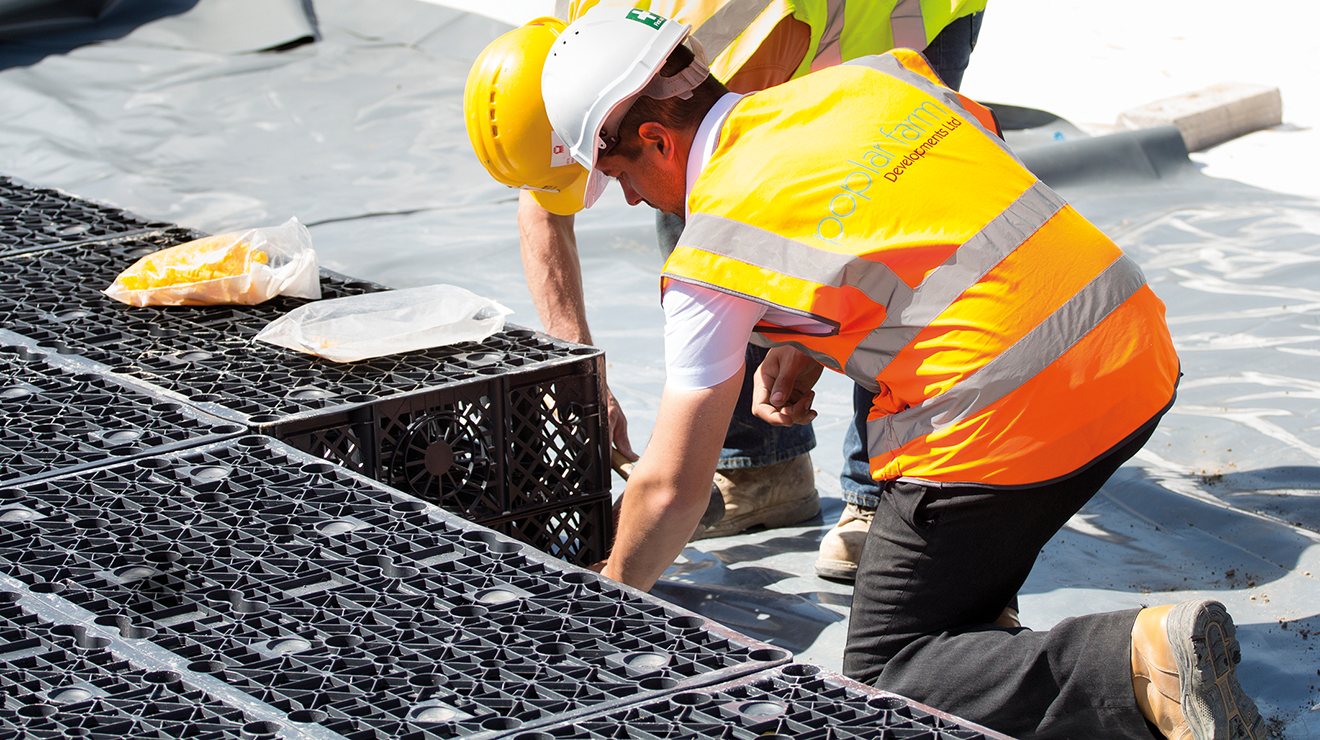With the long hot summer and the continuing development of brown eld land, our flood resilience continues to raise tensions across householders, insurers, councils and the Environment Agency. One thing is for sure – surface water run-off needs to be addressed, with best practice Sustainable Drainage Systems (SuDS) offering a solution which avoids using the overloaded sewerage system.
It’s a given that the more we urbanise the landscape, the less land we have for rainfall to be able to soak away into the ground. One solution to the ash flood issue is to manage rainwater where it falls, reducing the demand on built drainage and the sewerage infrastructure.
Taking a SuDS approach to managing water, housebuilders and developers can manage the risk of surface flooding by integrating these solutions into developments, whilst at the same time influencing other aspects of the site and reducing impermeable areas wherever possible.
Sustainable drainage mimics natural drainage processes by allowing rainfall to soak into the ground where possible or by delaying discharges. Reducing both the volume and rate of surface water run-off to sewers and watercourses, this helps to improve water quality, ecology and amenity value of watercourses. It is important, however, to remember that there is no single drainage solution for any one site. There are a number of options, from natural above ground SuDS solutions including swales, detention ponds, basins and permeable surfaces, to engineered solutions such as concrete culverts, plastic pipes, attenuation tanks and soakaways.
Faced with rising costs and stricter deadlines, modularisation is growing in popularity as contractors look to find the next generation of efficient and economical products and systems. Due to the numerous benefits both on- and off-site, underground modular geocellular units, such as StormCrate from Brett Martin Plumbing and Drainage, have become an increasingly popular choice at every stage of the supply chain, from the architect and specifier to the contractor and client.
MODULAR APPROACH
Weighing in at only 18kg per module and measuring 1200mm x 600mm x 420mm, the StormCrate modular units can be easily lifted by hand and then laid or stacked in rows. The units are suitable for a range of applications including residential, commercial and industrial projects.
StormCrates can either be wrapped in a geotextile which allows stored water to slowly seep into the surrounding ground and back into the water table; or a more common practice, wrapped in an impermeable geomembrane to create a sealed underground tank. The outlet from this tank is then controlled to facilitate a slow release of the stored water back into the drainage system over a longer period.
Manufactured from recycled plastic, StormCrates have a high void ratio of 95% which means that the units are highly-effcient at storing up to 300 litres of water in the event of heavy rains. If inspectability is required for future maintenance, then Brett Martin can offer StormCrate Inspect Crates. There are no limits on the use and design of the surface over the system and StormCrates may be successfully installed under parking areas, driveways and landscaped areas.
Hot dry summers, wetter winters and intensive showers are now the norm in our changing climate, which is why engineered solutions, such as StormCrate from Brett Martin Plumbing and Drainage, can work in association with traditional SuDS solutions to provide effective ood protection for both the short and long term.








